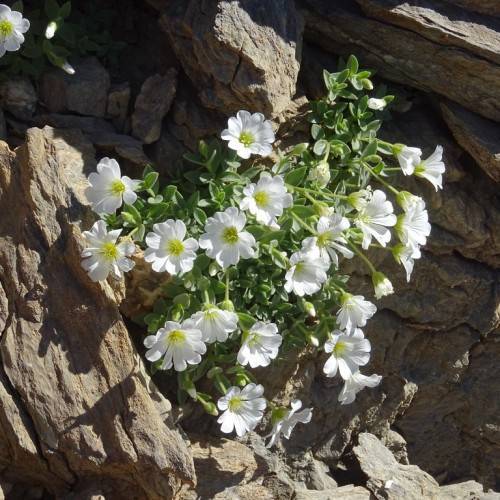
Alpine Mouse Ear Chickweed
Cerastium alpinum
Also Known As - Alpine ChickweedWatering:
Minimal
Hardiness Zone:
Sun:
full sun,part shade
Leaf:
Yes
Growth Rate:
Low
Drought Tolerant:
Yes
Salt Tolerant:
Yes
Care Level:
Medium
watering
Water Yellow Swanseed (Cephalaria alpina) deeply every 5-7 days. Watering should take place in the morning, ensuring the soil is moist but not soggy for the entire week. During hot summer months, daily watering may be necessary. During cooler winter months, shorten the time between waterings.
sunlight
Yellow Swanseed (Cephalaria alpina) prefers sunny and well-draining areas and grows best with 6 to 8 hours of direct sunlight each day. For optimal growth, place the plant in a spot that receives full sun in the morning and filtered shade in the afternoon. The plant should be protected from the hottest midday sun to prevent leaf scorching. If the plant does not receive enough sunlight, it may not flower or may look pale and sickly. In temperate and cooler climates, the plant can be grown in partial shade but may need more sunlight during the winter months.
pruning
For Yellow Swanseed, pruning should be done in the early spring before the plant begins to become active. Pruning should be done lightly as this species has a tendency to form a dense clump. Remove any dead leaves, dead stems, seed heads, and any other dead foliage. Also, work with the plant to create a more desirable shape by removing any stray stems or clusters. Generally, a light pruning of the ends of the stems is sufficient enough to keep the plant looking full and promote strong growth.
